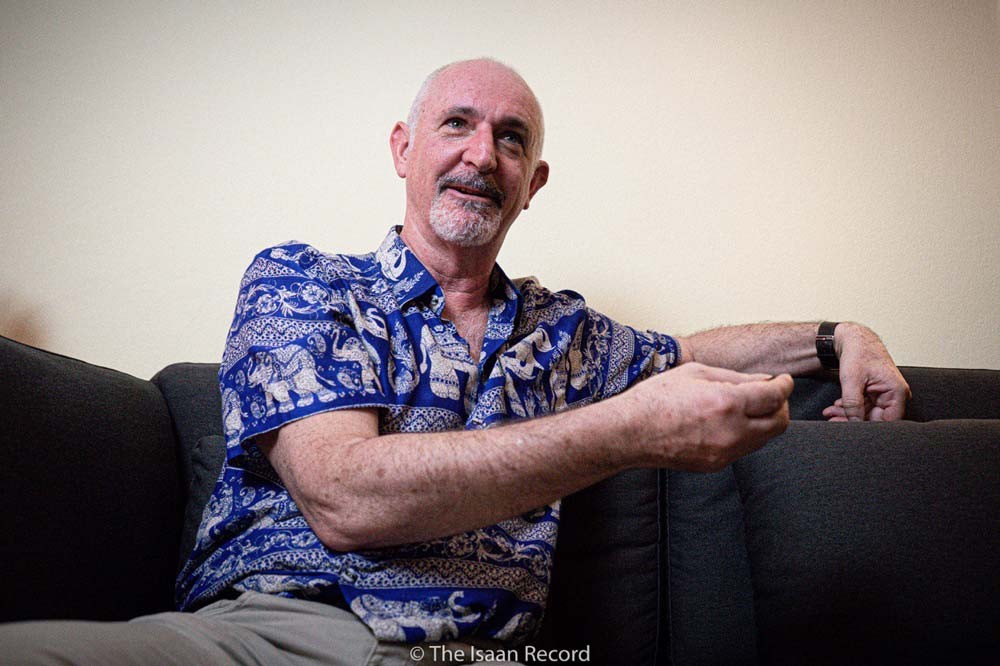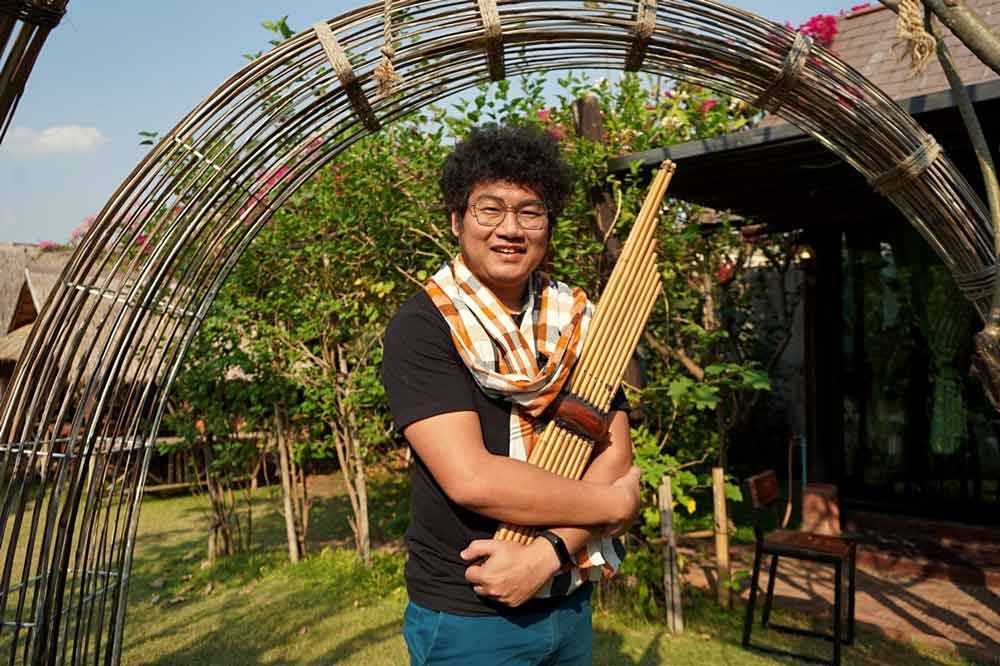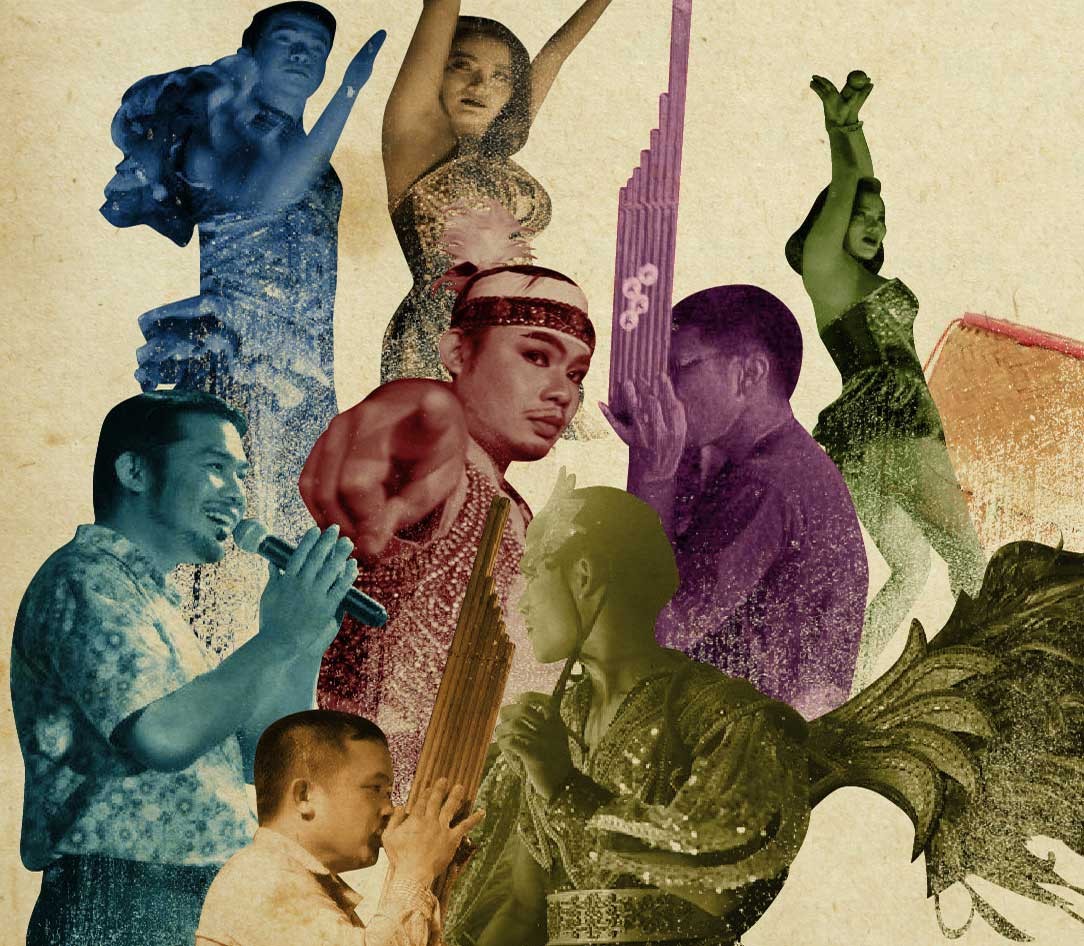The Soul of Molam series draws to a close with this 19th installment. We would prefer to call this a summary of the series rather than the end, as there are still many more stories to be told. All the sounds of Isaan music have yielded but a fraction of their richness to what we covered in the series.
March 16, the day the first article in this series was published, coincided with the outbreak of COVID-19 in Thailand. The government declared a state of emergency, along with a nationwide curfew forbidding people to go outdoors after ten at night.
It was a trying time for all, and many people might not have been in the mood to dive into music listening, to learn about the musical arts, or to seek out a molam gig to dance at. Everyone was on tenterhooks as to what would happen next.
Yet, as the 18 installments of the Soul of Molam series showed, be they interviews, videos, or articles, there was clearly a thirst for molam despite the pandemic. The likes, shares, and comments on The Isaan Record’s Facebook pages (Thai and English) speak for themselves.
Our readers’ views
Wilailak Ritdet, a Facebook follower, after reading The Soul of Molam (16): Masters of the khaen and the future of molam styles:
“Isaan music has always been with the Isaan people. If you’re hoping for the Thai government to promote it, dream on. They’re always trying to limit the definition of “traditional Thai music” to the khim, saw-u, saw-duang, and even the violin. Only the upper-class Thais play these instruments. Meanwhile, us Isaan people make and play the phin, khaen, wot [a circular pan-pipe], and loads more. They sound good; that’s why you hear them in all kinds of popular music, even in music from other countries. Some of the songwriters who came from Isaan came up with songs that are famous all over Thailand, and are legends across the country. The songs that they wrote have this sound that tell the story of nature and the countryside so well.”
“These days we have Sala Khunnawut trying to encourage youngsters to take part in the Tai-baan: The Cover program. He gets them to cover Isaan songs in their own way, and allows them to add more modern elements as they see fit. Isaan music will never go out of style.”
There were many more responses to our articles which were heartening to receive. They all showed that molam, and players of the phin and the khaen are all still well appreciated by the people of Isaan, both young and old.

John Garzoli, an Australian ethno-musicologist specializing in Isaan music, in particular the khaen. Credit The Isaan Record/Adithep Chanthet
An ethnomusicologist’s view
The Isaan Record also got in touch with John Garzoli, an Australian ethnomusicologist specializing in Isaan music, in particular the khaen (see the short version of his interview, the full version, and the video). Though he had to return to Australia, he wrote the following about the Soul of Molam series in an email:
“The Isaan Record’s series ‘Soul of Molam’ provides a comprehensive and uniquely valuable insight into molam. In it, a variety of writers present a range of views on the subject which intersect at some points and contradict each other at others.”
“The writers also describe the cultural work that molam does in social, cultural and political spheres. This entails the topics addressed in the historical form of lam klon vocal repartee, to celebratory expressions of contemporary Isaan identity, to molam performances in which the performers forcefully assert the dignity of Isaan culture while directly challenging authoritarian power.”
“Regardless of how the individual writers interpret the term ‘molam,’ the register in which they convey their perspectives reflects their enthusiasm and love for molam in all its forms. While this commitment may once have been crucial for the molam’s survival, it can now be seen as a celebration of its good health.”

Thawit Sitthongsi is a former member of Pong Lang Sa On. He is also known by his stage name “Nao Pong Lang Sa On”.
The views of Nao Pong Lang Sa On: “Even teenagers still listen to molam”
The interview with Thawit Sitthongsi –also known as Nao Pong Lang Sa On– former band member of the molam troupe Pong Lang Sa On, both in video and article form, was also well received.
Perhaps it’s because the Pong Lang Sa On band is still fondly held in the memories of many. This is despite it being 15 years since this band became famous for fusing traditional Isaan instrumentation with modern, globally recognized beats.
Thawit summarizes his own reading of the series:
“I see the past, present, and future of molam in this series,, especially the way the klon lam [the molam verses] have changed with the times. It really does reflect the state of society in Isaan.”
“For me, there’s no doubt that molam is going to make it. I can see from the comments of youngsters on the Isaan Record’s Facebook page that they’re still into Isaan music.The sound has changed, and if some people frown on that, like it’s not being played the way that it was taught or something, it doesn’t matter.”

Arthit “Fai” Mulsarn is the manager of the Molam Mobile Bus Project exhibition at the Jim Thompson Art Center.
A view from the Molam Bus: Front and center stage of paradise lost
Another interview that was right up there with our most popular pieces was The Soul of Molam (2): Inside the Molam Bus Project (video and article). Arthit Mulsarn, the manager of the Molam Mobile Bus Project of the Jim Thompson Art Center, wrote his thesis on political molam, and its role in the building of the Thai state.
This thesis showed that molam has been on the order of a battle for the cultural struggles between Isaan and the Siamese/Thai state for over a century. During the reigns of Rama IV and Rama V, it was forbidden for Isaan people to perform molam or to even play the khaen. It was fully recognized by Bangkok as a weapon of resistance to Siamese colonization.
Arthit noted that this series is the first time, to his knowledge, that a serious and multifaceted study of molam has been aired by a media publication.
But Arthit was keen to point out two factors that were not presented by the Isaan Record in this series. Firstly, that molam is a cultural industry that is already sizable, and is growing at a fast clip. “You can’t really understand molam if you don’t also look at the economics of molam,” Arthit cautions.
Secondly, Arthit points out that the Isaan Record missed out on covering the entire ecosystem of molam. Absent from the series, Arthit says, are the views of the molam consumers, the people dancing before the stage.
“Molam has grown into a mainstream affair. It is no longer merely a kind of ‘regional folk music.’ You can go to a real-deal molam gig just about anywhere in Thailand now. That’s because Isaan culture is being consumed both in Isaan and all over Thailand,” explains Arthit. “The music has developed, the melodies have developed, they’ve incorporated elements of other styles of music”

Patipan “Bank” Luecha is one of the new generation of politically active molam artists.
Molam Bank: Recording Isaan
In part 12 of our series, March to oust dictatorship, the Isaan Record recorded a live molam performance by Patipan “Bank” Luecha (real name Patiwat Saraiyaem). The performance took place at a political demonstration called “Khon Kaen Has Had Enough 2,” which was attended by students and other members of the public. Bank was also interviewed in part 7, Life is stranger than molam, where he shares views on molam and life in general as a former political prisoner.
“I’ve always seen the Isaan Record as an outlet that records the history of Isaan. So it is fitting that it is now telling and recording the future history of molam and mo khaen, and the way we’re living these days. The Isaan Record seems to put in a credible effort, and I appreciate that. It’s good that someone is recording all of this for posterity,” Bank says, half-singing.
For Bank, the Soul of Molam series gives people a glimpse of just how much molam could still change in 20 years’ time. It’s possible to “feel the lives” of the people involved in molam through this series.
“I mean it when I say that the Isaan Record really is recording Isaan,” says Bank.
The Soul of Molam (1) – Isaan’s folk music from state censorship to rising global fame
The Soul of Molam (2) – Inside the molam bus project: The Sound of Isaan’s political molam
The Soul of Molam (5) – Luk Thung Molam: From the Rice Fields to the City and back
The Soul of Molam (6) – Turning the music scene upside down, new Isaan singers find their voice
The Soul of Molam (8) – When molam performers face sexual harassment
The Soul of Molam (9) – Meet the costume creators behind the marvelous molam show of Rabiab Watasin
The Soul of Molam (10) – The legacy of molam revolutionary Pong Lang Sa On
The Soul of Molam (11) – Pong Lang Sa On: A molam revolutionary
The Soul of Molam (13) – The ancient roots of molam: From ritual to entertainment
The Soul of Molam (14) – The changing sound of popular Isaan music
The Soul of Molam (15) – Masters of the khaen and the future of disappearing molam styles
The Soul of Molam (16) – Masters of the khaen and the future of dying molam styles





